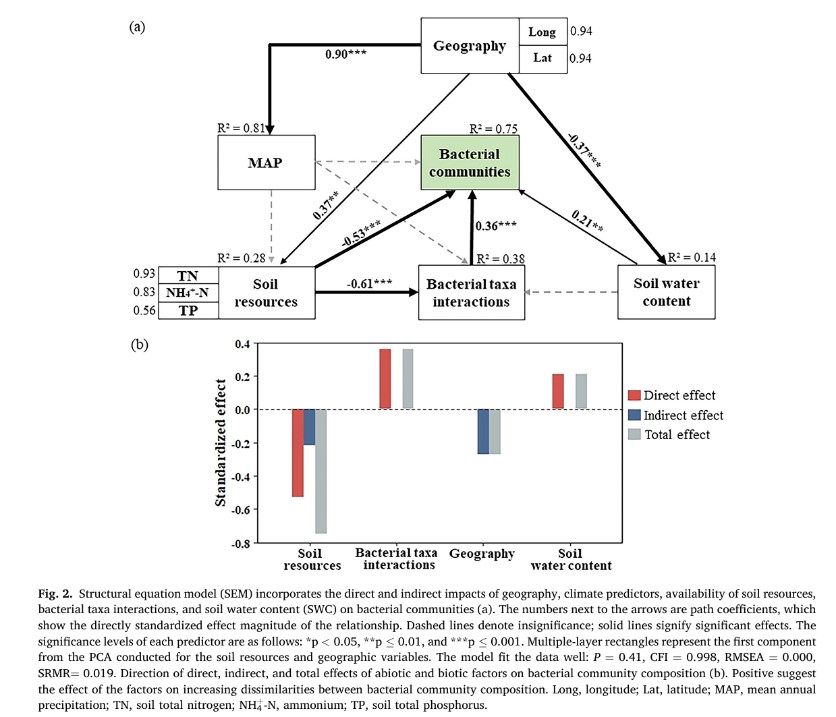New Advances by the South China Botanical Garden in the Assembly of Soil Bacterial Communities
Resources scarcity is prevalent in natural microbial communities, affecting both biodiversity and coexistence. However, its intricate impacts on community assembly remain incompletely understood. Master’s student Wu Cihao from South China Botanical Garden, under the guidance of his supervisor Ren Hai, conducted research on the assembly process of soil bacterial communities along the sandy coasts of Guangdong and Hainan in China. The study revealed that the spatial heterogeneity of soil resource availabilities, including total nitrogen, ammonium, and total phosphorus, explained 75 % of the total variation in the soil bacterial community and nitrogen was identified as the primary limiting resource. Notably, elevated nitrogen availability did not alleviate nitrogen limitations or promote biodiversity. Instead, it led to deterministic community assembly processes by intensifying negative biological interactions among taxa. This study offers novel insights into the biogeographic patterns of soil bacterial communities and has practical implications on soil restoration of barren sandy coast, which are prevalent along the southeast coast of China and globally.
This work is published in the journal “Global Ecology and Conservation”. This research was supported by the National Key Research and Development Program of China (2021YFC3100400), and South China Botanical Garden, Chinese Academy of Sciences (Granted No: QNXM-01).The article is available at:https://doi.org/10.1016/j.gecco.2024.e03171
First author information: Wu Cihao, South China Botanical Garden, Chinese Academy of Sciences. E-mail: cihao20@mails.ucas.ac.cn; Corresponding author information: Ren Hai, South China Botanical Garden, Chinese Academy of Sciences; E-mail: renhai@scbg.ac.cn

File Download: